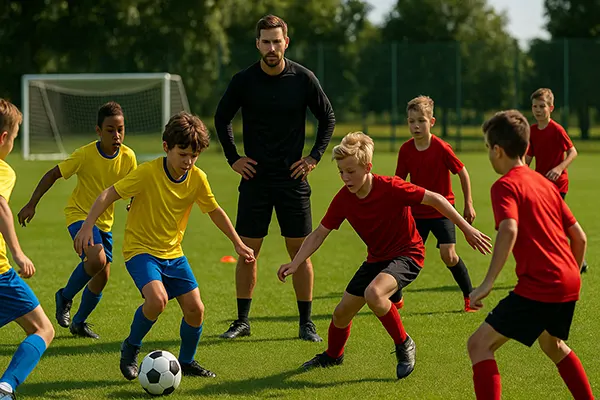In the landscape of global football, the emphasis on developing young talent has become a strategic pillar for national success and club profitability. European nations like Belgium, the Netherlands, and Croatia have built enviable reputations for producing world-class players from their youth academies. This article explores how these countries have turned their academies into global benchmarks, revealing key mechanisms and best practices contributing to their sustained success.
Belgium: Strategic Overhaul and Long-Term Investment
Belgium’s renaissance in youth football began in the early 2000s when the Royal Belgian Football Association initiated a complete revamp of its development system. With the support of Michel Sablon’s strategic blueprint, the focus shifted from physicality to technique, intelligence, and versatility. This decision led to a unified training curriculum across all age levels, ensuring consistency and tactical cohesion.
Top clubs like R.S.C. Anderlecht and K.R.C. Genk became breeding grounds for stars such as Kevin De Bruyne, Romelu Lukaku, and Thibaut Courtois. Genk’s academy in particular adopted data-driven scouting and holistic player monitoring, integrating education, nutrition, and psychology into its programme. This model has consistently produced talent for both domestic leagues and international markets.
By 2025, Belgium’s youth system continues to deliver top-tier talent, as evidenced by Jérémy Doku and Arthur Vermeeren’s rising profiles. With state-of-the-art facilities and a clear development pathway, Belgium’s academies maintain a sustainable pipeline to elite football.
Key Factors Behind Belgian Success
The alignment between clubs and the national federation was instrumental in Belgium’s transformation. A centralised methodology ensured coaches from grassroots to elite levels taught the same tactical principles. The 4-3-3 system became standard, promoting positional awareness and passing efficiency.
In addition, heavy investment in coach education elevated the overall quality of training. UEFA Pro Licence qualifications became the norm for academy heads, and regular seminars reinforced learning across the system. Importantly, mental resilience and creativity were prioritised alongside athletic performance.
Today, Belgian academies are not just talent factories — they are education hubs. Players are taught to become tactically flexible, multilingual, and media-savvy, enabling smooth transitions to clubs abroad and enhancing their long-term career value.
The Netherlands: A Legacy of Innovation and Tactical Mastery
The Dutch model has long been celebrated for its emphasis on technical excellence and total football philosophy. Clubs like Ajax and PSV Eindhoven operate with a clear identity rooted in positional play, one-touch passing, and collective intelligence. Ajax’s De Toekomst (“The Future”) academy remains a world leader in nurturing talent for club and country.
Recent graduates like Jurrien Timber, Ryan Gravenberch, and Xavi Simons are testaments to the enduring strength of the Dutch system. Structured training sessions, personalised coaching, and systematic use of video analysis provide young players with both the freedom to express themselves and the discipline to function within a team framework.
As of 2025, the KNVB (Dutch Football Association) has amplified collaboration with clubs and municipalities to further develop regional academies. These partnerships ensure that even smaller clubs adopt modern coaching philosophies and data integration tools pioneered by Ajax and Feyenoord.
How the Dutch Model Remains Effective
What sets Dutch academies apart is their commitment to individual development over early results. Competitive matches are secondary to mastery of technique, decision-making, and spatial awareness. Training often includes small-sided games and positional drills that mimic real match scenarios.
Moreover, Dutch academies integrate educational and psychological support services, recognising the mental demands placed on young athletes. This has become essential in preventing burnout and managing early exposure to media and commercial pressures.
The academy staff also work closely with players’ families, providing regular feedback and long-term development plans. This holistic approach not only strengthens player retention but also creates a positive, growth-focused environment that nurtures talent on and off the pitch.

Croatia: Efficiency, Mental Strength, and National Pride
Croatia may be a smaller football nation by population, but it consistently punches above its weight on the international stage. Clubs like GNK Dinamo Zagreb and Hajduk Split have long focused on creating technically gifted and mentally resilient players who can adapt to high-pressure environments.
Dinamo Zagreb’s academy, famed for producing Luka Modrić, Joško Gvardiol, and Mateo Kovačić, is considered one of the most efficient in Europe. Training at the academy includes intense tactical instruction, physical conditioning, and strong psychological development. The emphasis is on producing players who are not only skilled but fearless and adaptable.
In 2025, Croatia continues to supply Europe’s top leagues with talent. This success stems from the country’s ability to develop robust players without needing the financial resources of larger nations. Local coaches often double as mentors and community figures, further reinforcing commitment and discipline.
Why Croatia’s Model Works
Croatian academies are successful due to their grounded approach and emphasis on national identity. Players are taught to value hard work, humility, and teamwork from a young age. Unlike in larger systems, they are exposed to senior football earlier, accelerating their learning curve.
Additionally, Croatian youth programmes foster mental toughness through frequent competitive exposure. U19 and U21 players regularly train with first teams, preparing them for European competition both physically and mentally. Clubs like Dinamo use UEFA Youth League matches as key benchmarking tools.
Importantly, Croatia’s model benefits from strong scouting networks across the Balkans. Talented youngsters from Bosnia, Serbia, and Slovenia often join Croatian academies, adding diversity and increasing the competitive level within the system. This regional cooperation has created a unique talent ecosystem that continues to evolve.
